
Publications - Journal Articles
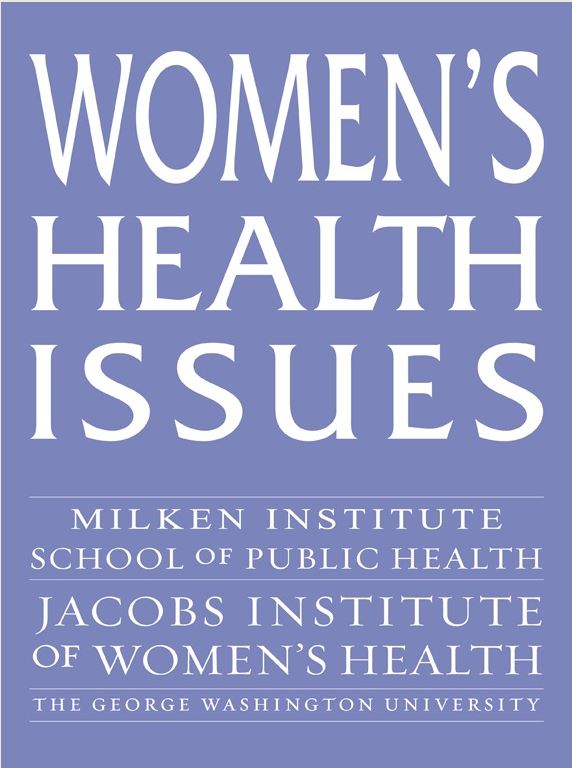 Knowledge and attitudes about long-acting reversible contraception among Latina women who desire sterilization
Knowledge and attitudes about long-acting reversible contraception among Latina women who desire sterilization
Kari White, Kristine Hopkins, Joseph E. Potter and Daniel Grossman
Women’s Health Issues 2013 23-4:e257-e263
Abstract
Background: There is growing interest in increasing the use of long-acting reversible contraception (LARC), and suggestions that such methods may serve as an alternative to sterilization. However, there is little information about whether women who do not want more children would be interested in using LARC.
Methods: We conducted semistructured interviews with 120 parous Latina women in El Paso, Texas, who wanted a sterilization but had not obtained one. We assessed women’s awareness of and interest in using the copper intrauterine device (IUD), levonorgestrel intrauterine system (LNG-IUS), and etonogestrel implant.
Findings: Overall, 51%, 23%, and 47% of women reported they had heard of the copper IUD, LNG-IUS, and implant, respectively. More women stated they would use the copper IUD (24%) than the LNG-IUS (14%) or implant (9%). Among women interested in LARC, the most common reasons were that, relative to their current method, LARC methods were more convenient, effective, and provided longer-term protection against pregnancy. Those who had reservations about LARC were primarily concerned with menstrual changes. Women also had concerns about side effects and the methods’ effectiveness in preventing pregnancy, preferring to use a familiar method.
Conclusions: Although these findings indicate many Latina women in this setting do not consider LARC an alternative to sterilization, they point to an existing demand among some who wish to end childbearing. Efforts are needed to improve women’s knowledge and access to a range of methods so they can achieve their childbearing goals.
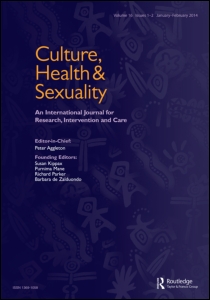 Knowledge and beliefs about reproductive anatomy and physiology among Mexican-origin women in the U.S.: Implications for effective oral contraceptive use
Knowledge and beliefs about reproductive anatomy and physiology among Mexican-origin women in the U.S.: Implications for effective oral contraceptive use
Michele Shedlin, Jon Amastae, Joseph E. Potter, Kristine Hopkins, and Daniel Grossman
Culture, Health and Sexuality 2013 15(4):466-79
Abstract
Inherent in many reproductive health and family planning programmes is the problematic assumption that the body, its processes and modifications to it are universally experiences in the same way. This paper addresses contraceptive knowledge and beliefs among Mexican-origin women, based upon data gathered by the qualitative component of the Border Contraceptive Access Study. Open-ended interviews explored the perceived mechanism of action of the pill, side-effects, non-contraceptive benefits, and general knowledge of contraception. Findings revealed complex connections between traditional and scientific information. The use of medical terms (e.g., “hormone”) illustrated attempts to integrate new information with existing knowledge and belief systems. Conclusions address concerns that existing information and services may not be sufficient if population-specific knowledge and beliefs are not assessed and addressed. Findings can contribute to the development of effective education, screening and reproductive health services.
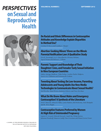 Frustrated demand for sterilization among low-income Latinas in El Paso, Texas
Frustrated demand for sterilization among low-income Latinas in El Paso, Texas
Joseph E. Potter, Kari White, Kristine Hopkins, Sarah McKinnon, Daniel Grossman, Michele Shedlin, and Jon Amastae
Perspectives in Sexual and Reproductive Health 2012; 44: 228–235.
Abstract
Context: Sterilization is the most commonly used contraceptive in the United States, yet access to this method is limited for some.
Methods: A 2006–2008 prospective study of low-income pill users in El Paso, Texas, assessed unmet demand for sterilization among 801 women with at least one child. Multivariable logistic regression analysis identified characteristics associated with wanting sterilization. In 2010, at an 18-month follow-up, women who had wanted sterilization were recontacted; 120 semistructured and seven in-depth interviews were conducted to assess motivations for undergoing the procedure and the barriers faced in trying to obtain it.
Results: At baseline, 56% of women wanted no more children; at nine months, 65% wanted no more children, and of these, 72% wanted sterilization. Only five of the women interviewed at 18 months had undergone sterilization; two said their partners had obtained a vasectomy. Women who had not undergone sterilization were still strongly motivated to do so, mainly because they wanted no more children and were concerned about long-term pill use. Among women's reasons for not having undergone sterilization after their last pregnancy were not having signed the Medicaid consent form in time and having been told that they were too young or there was no funding for the procedure.
Conclusions: Because access to a full range of contraceptive methods is limited for low-income women, researchers and providers should not assume a woman's current method is her method of choice.
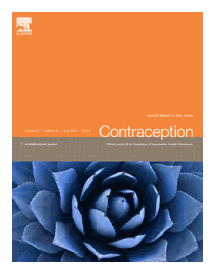 Reproductive health preventive screening among clinic vs. over-the-counter oral contraceptive users
Reproductive health preventive screening among clinic vs. over-the-counter oral contraceptive users
Kristine Hopkins, Daniel Grossman, Kari White, Jon Amastae, and Joseph E. Potter
Contraception 2012; 86: 376-382.
Abstract
Background: Interest is growing in moving oral contraceptives over-the-counter (OTC), although concerns exist about whether women would continue to get preventive health screening.
Study Design: We recruited cohorts of US-resident women who obtained oral contraceptives from US family planning clinics (n=532) and OTC from pharmacies in Mexico (n=514) and interviewed them four times over 9 months. Based on self-reports of having a Pap smear within 3 years or ever having had a pelvic exam, clinical breast exam and testing for sexually transmitted infections (STIs), we assessed the prevalence of preventive screening using Poisson regression models.
Results: The prevalence of screening was high for both groups (>88% for Pap smear, pelvic exam and clinical breast exam and >71% for STI screening), while the prevalence ratios for screening were higher for clinic users, even after multivariable adjustment.
Conclusions: Results suggest that most women would obtain reproductive health preventive screening if oral contraceptives were available OTC, and also highlight the need to improve access to preventive screening for all low-income women.
 Contraindications to progestin-only oral contraceptive pills among reproductive aged women
Contraindications to progestin-only oral contraceptive pills among reproductive aged women
Kari White, Joseph E. Potter, Kristine Hopkins, Leticia Fernández, Jon Amastae, and Daniel Grossman
Contraception 2012; 86: 199-203.
Abstract
Background: Progestin-only oral contraceptive pills (POPs) have fewer contraindications to use compared to combined pills. However, the overall prevalence of contraindications to POPs among reproductive-aged women has not been assessed.
Study Design: We collected information on contraindications to POPs in two studies: (1) the Self-Screening Study, a sample of 1267 reproductive-aged women in the general population in El Paso, TX, and (2) the Prospective Study of OC Users, a sample of current oral contraceptive (OC) users who obtained their pills in El Paso clinics (n=532) or over the counter (OTC) in Mexican pharmacies (n=514). In the Self-Screening Study, we also compared women's self-assessment of contraindications using a checklist to a clinician's evaluation.
Results: Only 1.6% of women in the Self-Screening Study were identified as having at least one contraindication to POPs. The sensitivity of the checklist for identifying women with at least one contraindication was 75.0% [95% confidence interval (CI): 50.6%–90.4%], and the specificity was 99.4% (95% CI: 98.8%–99.7%). In total, 0.6% of women in the Prospective Study of OC Users reported having any contraindication to POPs. There were no significant differences between clinic and OTC users.
Conclusion: The prevalence of contraindications to POPs was very low in these samples. POPs may be the best choice for the first OTC oral contraceptive in the United States.
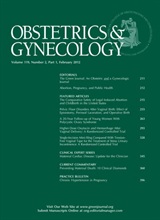 Continuation of prescribed compared with over-the-counter oral contraceptives
Continuation of prescribed compared with over-the-counter oral contraceptives
Joseph E. Potter, Sarah McKinnon, Kristine Hopkins, Jon Amastae, Michele G. Shedlin, Daniel A. Powers, and Daniel Grossman
Obstetrics & Gynecology 2001; 17(3): 551-557
Abstract
Objective: To estimate differences in continuation of oral contraceptive pills (OCPs) between U.S. resident women obtaining pills in U.S. family planning clinics compared with over-the-counter in Mexican pharmacies.
Methods: In El Paso, Texas, we recruited 514 OCP users who obtained pills over the counter from a Mexican pharmacy and 532 who obtained OCPs by prescription from a family planning clinic in El Paso. A baseline interview was followed by three consecutive surveys over 9 months. We asked about date of last supply, number of pill packs obtained, how long they planned to continue use, and experience of side effects. Retention was 90%, with only 105 women lost to follow-up.
Results: In a multivariable Cox proportional hazards model, discontinuation was higher for women who obtained pills in El Paso clinics compared with those who obtained their pills without a prescription in Mexico (hazard ratio 1.6, 95% confidence interval [CI] 1.1–2.3).
 Contraindications to combined oral contraceptives among over-the-counter and clinic pill users
Contraindications to combined oral contraceptives among over-the-counter and clinic pill users
Daniel Grossman, Kari White, Kristine Hopkins, Jon Amastae, Michele G. Shedlin, and Joseph E. Potter
Obstetrics & Gynecology 2011; 17(3): 558-565.
Abstract
Objective: To compare the estimated proportion of contraindications to combined oral contraceptives (COCs) between women living in El Paso, Texas, obtaining COCs in US public clinics versus over the counter (OTC) in Mexican pharmacies.
Methods: We recruited a cohort of 501 El Paso resident women who obtained COCs over the counter (OTC) in Mexico and 514 women who obtained COCs from family planning clinics in El Paso. Based on self-report of WHO category 3 and 4 contraindications and interviewer-measured blood pressure, we estimated the proportion of contraindications and, using multivariable-adjusted logistic regression, identified possible predictors of contraindications.
Results: The estimated proportion of any category 3 or 4 contraindication was 18%. Relative contraindications (category 3) were more common among OTC users (13% vs 9% among clinic users, p=0.006). Absolute contraindications (category 4) were not different between the groups (5% for clinic users vs 7% for OTC users, p=0.162). Hypertension was the most prevalent contraindication (8%). After multivariable adjustment, OTC users had higher odds of being contraindicated compared to clinic users (OR 1.59, 95% CI: 1.11-2.29). Women age 35 years or older (OR 5.30, 95% CI: 3.59-7.81) and those with body mass index ≥ 30.0 kg/m2 (OR 2.24, 95% CI: 1.40-3.56) also had higher odds of being contraindicated.
Conclusions: Relative COC contraindications are more common among OTC users in this setting. Research is needed to determine whether checklists can be used to accurately identify contraindications when women obtain COCs OTC. Progestin-only pills might be a better candidate for the first OTC product given their fewer contraindications.
 Clinic versus over-the-counter access to oral contraception: Choices women make along the US-Mexico border
Clinic versus over-the-counter access to oral contraception: Choices women make along the US-Mexico border
Joseph E. Potter, Kari White, Kristine Hopkins, Jon Amastae, and Daniel Grossman
American Journal of Public Health 2010; 100:1130-1136.
Abstract
Objectives. As part of the Border Contraceptive Access Study, we interviewed oral contraceptive (OC) users living in El Paso, Texas, to assess motivations for patronizing a US clinic or a Mexican pharmacy with over-the-counter (OTC) pills and to determine which women were likely to use the OTC option.
Methods. We surveyed 532 clinic users and 514 pharmacy users about background characteristics, motivations for choosing their OC source, and satisfaction with this source.
Results. Older women and women born and educated in Mexico were more likely to patronize pharmacies. Cost of pills was the main motivation for choosing their source for 40% of pharmacy users and 23% of clinic users. The main advantage cited by 49% of clinic users was availability of other health services. Bypassing the requirement to obtain a doctor’s prescription was most important for 27% of pharmacy users. Both groups were very satisfied with their pill source.
Conclusions. Women of different ages, parities, and educational levels would likely take advantage of an OTC option were OCs available at low cost. Improving clinic provision of OCs should be considered.
 Perceptions of the safety of oral contraceptives among a predominantly Latina population in Texas
Perceptions of the safety of oral contraceptives among a predominantly Latina population in Texas
Daniel Grossman, Leticia Fernandez, Kristine Hopkins, Jon Amastae, and Joseph E. Potter
Contraception 2010; 81: 254–260.
Abstract
Background: Fear of side effects and previous negative experiences are common reasons for contraceptive nonuse.
Study Design: We collected information about perceptions of oral contraceptive (OC) safety from 1271 women 18-49 years old in El Paso, TX, and compared their responses to a medical evaluation by a nurse practitioner. We also asked participants about their interest in obtaining OCs over the counter (OTC).
Results: Among 794 women potentially at risk of unintended pregnancy, 56.0% said that OCs were medically safe for them. Reasons given for OCs being unsafe were related to fears of side effects and prior negative experiences rather than true contraindications. Older women and participants recruited at the less affluent recruitment site were significantly more likely to report that OCs were medically unsafe for them (pb.05). Nonusers who thought OCs were medically unsafe for them were as likely to be medically eligible for use as current hormonal users. Among nonusers or nonhormonal users and potential OC candidates (n=601), 60.2% said they would be more likely to use OCs if they were available OTC.
Conclusions: Women's perception of OC safety does not correlate well with medical eligibility for use. More education about the safety and health benefits of hormonal contraception is needed. OTC availability might contribute to more positive safety perceptions of OCs compared to a prescription environment.
 Accuracy of self-screening for contraindication to combined oral contraceptive use
Accuracy of self-screening for contraindication to combined oral contraceptive use
Daniel Grossman, Leticia Fernandez, Kristine Hopkins, Jon Amastae, Sandra G. Garcia, and Joseph E. Potter
Obstetrics & Gynecology 2008; 112 (3): 572-578. NIH Public Access Version.
Abstract
Objective: To estimate how well a convenience sample of women from the general population could self-screen for contraindications to combined oral contraceptives using a medical checklist.
Methods: Women 18–49 years old (N=1,271) were recruited at two shopping malls and a flea market in El Paso, Texas, and asked first whether they thought birth control pills were medically safe for them. They then used a checklist to determine the presence of level 3 or 4 contraindications to combined oral contraceptives according to the World Health Organization Medical Eligibility Criteria. The women then were interviewed by a blinded nurse practitioner, who also measured blood pressure.
Results: The sensitivity of the unaided self-screen to detect true contraindications was 56.2% (95% confidence interval [CI] 51.7– 60.6%), and specificity was 57.6% (95% CI 54.0–61.1%). The sensitivity of the checklist to detect true contraindications was 83.2% (95% CI 79.5– 86.3%), and specificity was 88.8% (95% CI 86.3–90.9%). Using the checklist, 6.6% (95% CI 5.2–8.0%) of women incorrectly thought they were eligible for use when, in fact, they were contraindicated, largely because of unrecognized hypertension. Seven percent (95% CI 5.4–8.2%) of women incorrectly thought they were contraindicated when they truly were not, primarily because of misclassification of migraine headaches. In regression analysis, younger women, more educated women, and Spanish speakers were significantly more likely to correctly selfscreen (P<.05).
Conclusion: Self-screening for contraindications to oral contraceptives using a medical checklist is relatively accurate. Unaided screening is inaccurate and reflects common misperceptions about the safety of oral contraceptives. Over-the-counter provision of this method likely would be safe, especially for younger women and if independent blood pressure screening were encouraged.
Publications - Other
 Lessons for border research: The Border Contraceptive Access Study
Lessons for border research: The Border Contraceptive Access Study
Pp. 249-264 in Uncharted Terrains: New Directions in Border Research Methodology, Ethics, and Practice, edited by Anna Ochoa O’Leary, Colin M. Deeds, and Scott Whiteford. Tucson: The University of Arizona Press, 2013.

